Photo: A freshwater sponge (Dosilia radiospiculata) growing on aquaculture mesh in one of our vats.
This blog is an update of another blog: https://goliadfarms.com/a-bryozoan-lives-in-the-greenhouses/. Read it for background.
Way back in pre-Coronavirus ages, October 2019, I wrote the above blog about a neat Bryozoan we thought was found in our recirculating systems. I sent photos to Matt Hill of EcoAnalysts, Inc., our go-to expert on invertebrate identification. He identified the organism in the photo above as a Bryozoan, but suggested I send him a sample to verify. I finally got around to doing that late April of this year. Here’s the email from Matt identifying it not a as Bryozoan but as a freshwater sponge:
Hi Charles,
I took a look at the specimen you sent me, and it is the freshwater sponge Dosilia radiospiculata. Again, sorry for my incorrect initial identification. Dosilia radiospiculata is endemic to North America, restricted to limestone areas with high bicarbonate alkalinity and conductivity. Freshwater sponges are highly intolerant of poor water quality, so their presence is a testament to the quality of your system.
To identify sponges, you place a small portion of the organism in a dish and add household bleach. The bleach dissolves the collagen, leaving the silica skeletal elements (spicules). There are three types of spicules in the sponge skeleton; megascleres, microscleres, and gemmoscleres. The megascleres and microscleres form the scaffold on which the sponge’s tissues are supported. The gemmoscleres are only found on the surface of gemmules.
Gemmules are the resting and dispersal stage of freshwater sponges. They are spherical bodies formed within the sponge’s tissues, composed of an inner core of thesocytes (analogous to our stem cells), and outer protective layers of dead cells and gemmoscleres. The gemmules are released from the sponge after it dies, and remains dormant until it encounters favorable conditions. While dormant, gemmules can survive freezing and drying for several years. When the gemmule is ready to germinate, the thesocytes exit through a small hole and differentiate into the tissues of the sponge.
I’ve attached photos of all of these structures, let me know if you have any questions.
Matthew A. Hill, Taxonomist
EcoAnalysts, Inc.
I do like invertebrate taxonomist geeks! I learned several new terms that I hope to work into conversations in the future. Can you imagine those conversations? The photos that Matt mentions are attached at the end of this blog. (By the way, if you examine those photos, you might also be a taxonomist geek! If you avoid looking at them so as to not be considered a geek, you are probably a closet geek and need to embrace your geekiness. I, of course, examined them in detail, but that doesn’t make me a geek. I’m a zoologist, I have to examine them. That doesn’t mean I’m a geek…really.)
These sponges seem ideally suited to our systems. Our water is rock hard, perfectly fitting the criteria for “limestone areas with high bicarbonate alkalinity and conductivity.” If you let a faucet slowly drip, a stalactite and stalagmite will form. And, our systems have pristine water quality, which is good since “freshwater sponges are highly intolerant of poor water quality.”
Since the first sponge was found, we’ve discovered them in many of our vats. They seem to like the aquaculture netting we use to make fry cages. They also grow in the sides of the vats and even attached to the floating hornwort (Ceratophyllum demersum) we grow in our fish vats. My only concern is that they might like the insides of our 2” water lines. The pressure inside the lines is high, but what if they clog up our plumbing? So far, several months since we first noticed them, we’ve had no problems with clogging.
Matt Hill Photos:
If you want higher quality photos, let me know and I can send you the raw files.
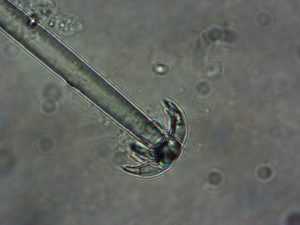

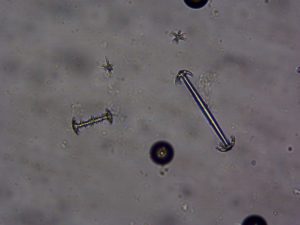
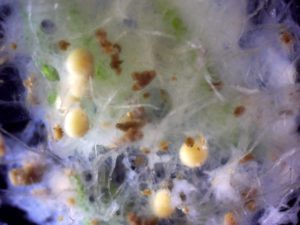
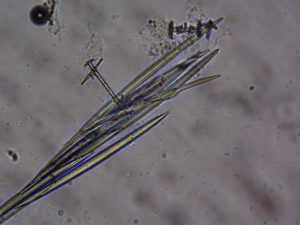

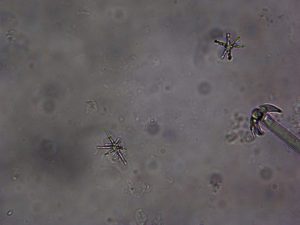

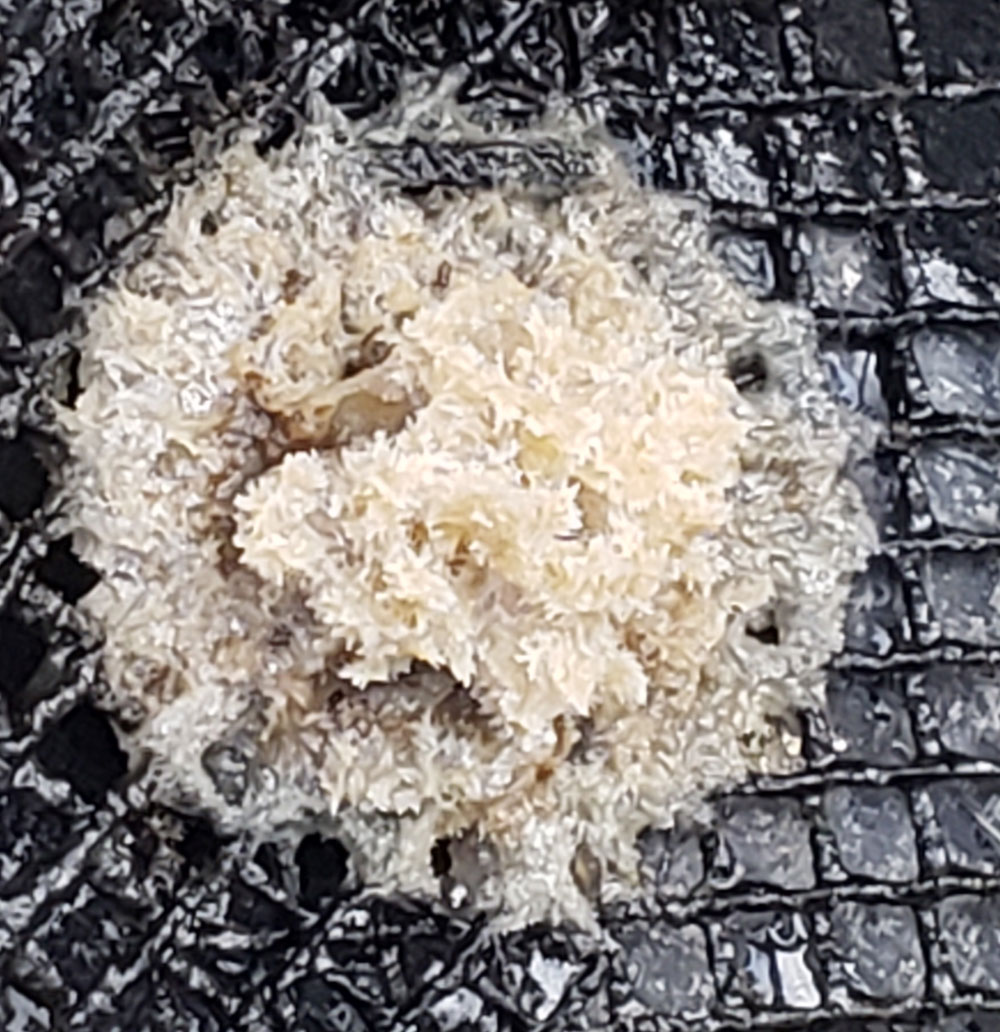
Ryan Strait says
Freshwater sponges are amazing little creatures. I’m looking at possibly purchasing some from Ward Science for my tanks… once they are more established. If you end up with an excess of sponge I’d definitely be willing to purchase some sponge from you. If you’re getting good results growing them on netting that might make a really great aquascaping piece. Thanks for the idea and posting your experience with sponges in your system.
Ryan
Charles Clapsaddle says
Ryan,
I haven’t encountered any since the 2021 Texas Winter Storm, but we’ve only started processing vats since we rebuilt our breeding colonies. I’ll keep an eye out for some.
Charles